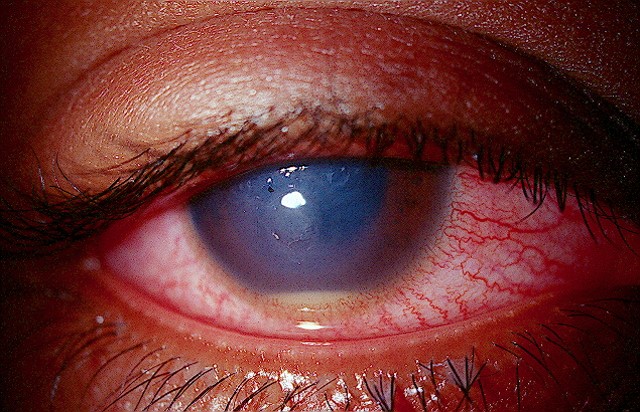 |
| Microbiota on the periocular skin and lid margin are thought to be the main source of contamination during cataract surgery. Microbiota load is influenced by patient age, chronic topical medication use and ocular surface disease. Photo: Joseph W. Sowka, OD. Click image to enlarge. |
Endophthalmitis is fortunately a rare complication, but its rarity also makes it challenging for individual eye centers to calculate their surgical infection rates. Researchers turned to larger datasets to shed some light on this complication and its risk factors. Using the Royal College of Ophthalmologists’ National Ophthalmology Database (RCOphth NOD) to study post-cataract endophthalmitis, they identified risk factors that will help inform surgical counseling and strategies to reduce infection risk.
The analysis included more than 1.3 million cataract surgeries performed on 920,286 patients across 76 centers by 3,570 surgeons. The researchers identified 308 cases (0.02%; 55.5% female; median age 76.9) of recorded endophthalmitis (occurring within 42 days of the surgery). For the 2,315 immediate sequential bilateral cataract surgery patients, there were no cases reported. Endophthalmitis rates were not significantly different based on the grade of operating surgeon. Overall, the researchers reported an endophthalmitis rate ranging from 0.015% to 0.035% between 2010 and 2020.
Posterior capsular rupture (PCR) was the greater risk factor for endophthalmitis since it usually requires additional surgical time, procedures and instrumentation to complete the case, thereby increasing the chances of introducing microorganisms into the eye. Other identified risk factors included:
- Uveitis/posterior synechiae
- Previous vitrectomy surgery
- Previous anti-VEGF therapy
- Glaucoma
- Corneal pathology
- Diabetes mellitus
The researchers wrote in their Ophthalmology paper that based on a risk factor model, “the lowest probability of post-cataract surgery endophthalmitis is 0.015% for a patient without diabetes mellitus who has not had anti-VEGF therapy with none of the ocular conditions and where PCR is avoided during surgery. This risk increases to 0.108% if PCR occurs.” Without PCR but with all other ocular conditions, the risk of endophthalmitis is 2.645%; with PCR the risk is 16.139%.
They concluded that this study “demonstrates the utility of large-scale clinical databases for risk factor analysis of rare but highly important, sight-threatening surgical complications,” which can serve when prospective clinical studies are too costly. Recommended future developments included national benchmarks of incidence and national prospective surveillance networks to monitor real-time cases to identify and respond to potential outbreaks.
Low L, Shah V, Norridge CFE, et al. RCOphth NOD, Report 10: risk factors for post-cataract surgery endophthalmitis. Ophthalmology 2023. [Epub ahead of print]. |

